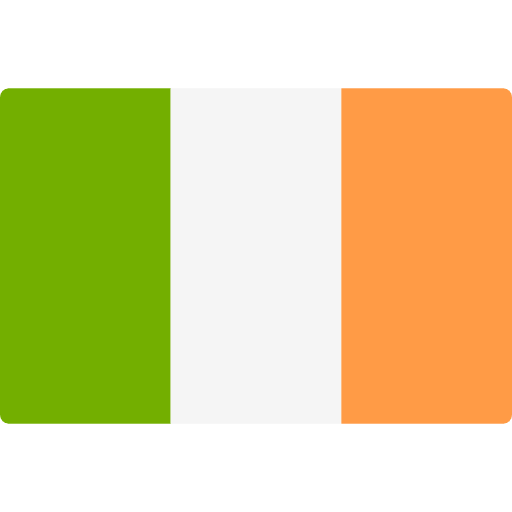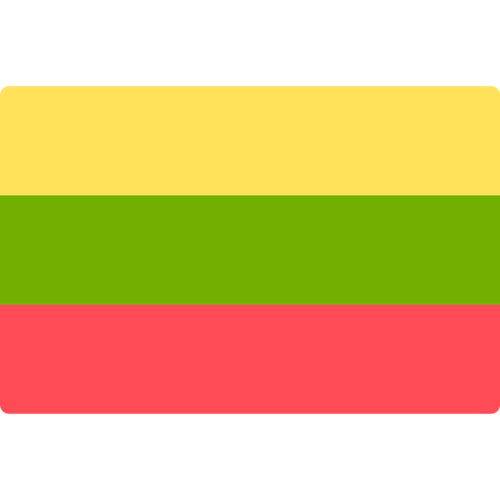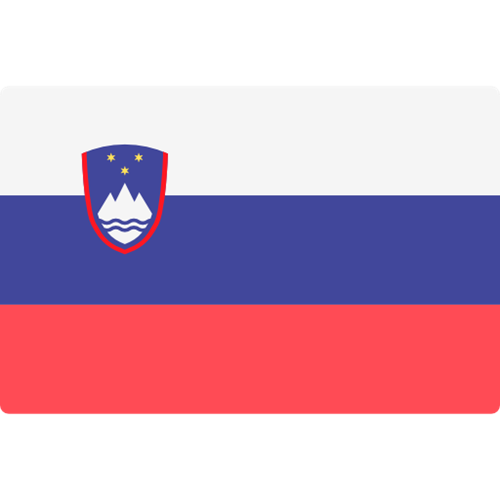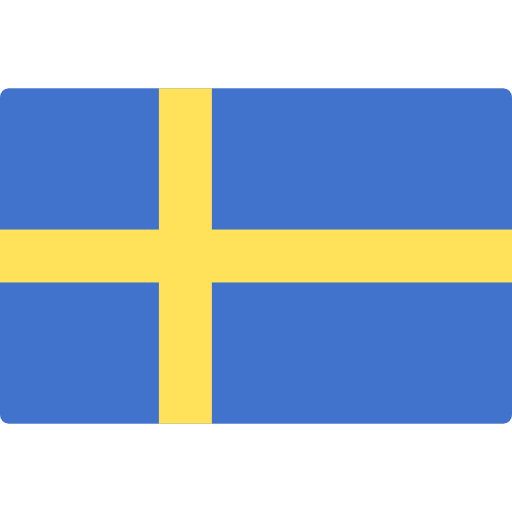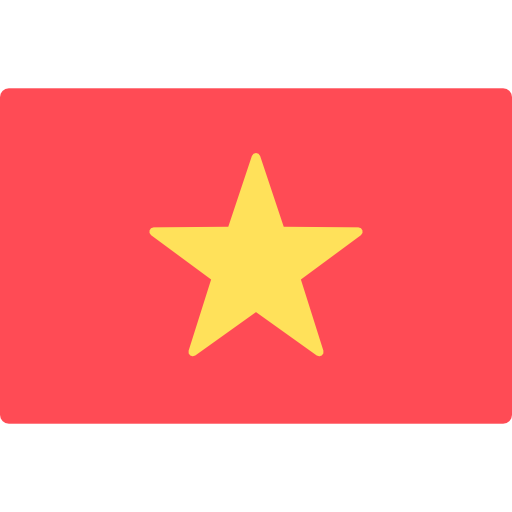Eurofins Toys & Hardlines Monthly Bulletin (November 2024)


Proposal for new application date for the European Deforestation Regulation
On 16 October 2024, the Council agreed to the Commission’s proposal to postpone the application date of Regulation (EU) 2023/1115 on the Union market and the export from the Union of certain commodities and products associated with deforestation and forest degradation and repealing Regulation (EU) No 995/2010.
According to this proposal, the obligations stemming from this regulation would be binding from:
- 30 December 2025: For large operators and traders
- 30 June 2026: For micro- and small enterprises
The Council will now inform the European Parliament of its position in view of the Parliament’s decision on its position. The aim is to have the regulation formally adopted by both co-legislators and published in the Official Journal of the EU so that it can enter into force by the end of the year.
For more information, please refer to the official proposal publication here on the European Commission website.
New update to Candidate List of Substances of Very High Concern (SVHCs)
On 7 November 2024, the ECHA (European Chemicals Agency) released the new Candidate List of SVHCs with the addition of one new substance. The current list of SVHCs now contains 242 substances.
See the table below that indicates the latest substance addition:
|
Nº |
Substance name |
EC number |
CAS number |
Reason for inclusion |
Examples of use(s) |
|
1 |
Triphenyl Phosphate |
204-112-2 |
115-86-6 |
Endocrine disrupting properties (Article 57(f) - environment) |
This substance is used as a flame retardant and plasticiser in polymer formulations, adhesives and sealants. |
Legal obligations for companies using SVHC substances include:
- Suppliers provide customers and consumers with enough information to allow for safe use of products that contain a substance of very high concern (SVHC) above a concentration of 0.1 % (weight by weight)
- Importers and producers of these products must notify the ECHA if their article contains SVHC substances above a concentration of 0.1% weight by weight (w/w) and the substance is present in those products in quantities totalling over 1 tonne per producer or per importer per year. The notifications must be submitted within six months from the date that the substance is included in the list.
- Suppliers of substances on the Candidate List, supplied either on their own or in mixtures, must provide their customers with a safety data sheet.
- Under the Waste Framework Directive (Directive 2008/98/EC on waste- WFD), any supplier of an article containing a substance of very high concern (SVHC) in a concentration above 0.1% weight by weight (w/w) on the EU market is required to submit a SCIP Notification on that article to ECHA, as of 5 January 2021. SCIP is the database holding information on Substances of Concern in articles, as such or in complex objects (products), established under the WFD. The SCIP database complements the existing notification obligations for Candidate List substances in articles subject to REACH regulation and its related communication through the supply chain, according to Articles 7 (2) and 33 respectively.
Click here to refer to the official List on ECHA’s website.
New cybersecurity requirements for products with digital elements
On 10 October 2024, the European Council adopted a new law related to cybersecurity in products with digital elements such as home cameras, fridges, TVs, and toys and this way they are safe before they are placed on the market. The regulation will apply to all products that are connected either directly or indirectly to another device or a network.
It will be published in the EU’s official journal soon. The new regulation will enter into force twenty days after this publication and will apply 36 months after it enters into force with some provisions to apply at an earlier stage.
For more information, consult the official publication of the European Parliament and Council publication: Regulation of the European Parliament and the Council on Horizontal Cybersecurity Requirements for Products with Digital Elements and Amending Regulations (EU) no 168/2013 and (EU) 2019/1020 and Directive (EU) 2020/1828 (Cyber Resilience Act)
New roles of the ‘Safety Gate’ national contact points
On 10 October 2024, the European Commission published the Implementing Regulation (EU) 2024/2639, laying down rules for the application of Article 25 of Regulation (EU) 2023/988 on general product safety.
This implementing act specifies the role and tasks of single national contact points that each Member State must-have for the rapid alert system for sharing information on corrective measures concerning dangerous products (‘the Safety Gate rapid alert system’).
For more information, please refer to the official publication on the European Commission website here.
Evaluation of EU consumer laws
On 3 October 2024, the European Commission published the final version of the Commission Staff Working Document Fitness Check of EU consumer laws on digital fairness.
In May 2022, the European Commission announced that it would analyse and evaluate several pieces of EU consumer protection legislation such as:
- the Unfair Commercial Practices Directive 2005/29/EC
- the Consumer Rights Directive 2011/83/EU
- the Unfair Contract Terms Directive 93/13/EEC
This determines if they are fit for purpose to ensure a high level of protection in the digital environment and an equal level of fairness online and offline.
For more information, please refer to the official publication on the European Commission website here.
The table below summarises the most recent standard updates and upcoming dates of withdrawal (non-exhaustive):
(*) Date of withdrawal: The latest date by which national standards conflicting with a European Norm (EN) (and Harmonisation Document (HD) for the European Committee for Electrotechnical Standardisation (CENELEC)) have to be withdrawn.
|
The European Committee for Standardisation (CEN)/CENELEC |
||||
|
Reference |
Title |
Date of withdrawal (*) |
Supersedes |
|
|
Carrier Cycles - Part 3: Lightweight multi-track carrier cycles - Mechanical aspects |
31 March 2025 |
|
||
|
Fans - Dimensions (ISO 13351:2024) |
31 March 2025 |
|||
|
Paints and varnishes - Determination of viscosity using rotational viscometers - Part 1: Absolute viscosity measurement with cone-plate measuring geometry at high shear rates (ISO 2884-1:2024) |
31 March 2025 |
|||
|
Paints and varnishes - Wettability - Part 3: Determination of the surface tension of liquids using the pendant drop method (ISO 19403-3:2024) |
31 March 2025 |
|||
|
Paints and varnishes - Wettability - Part 2: Determination of the surface free energy of solid surfaces by measuring the contact angle (ISO 19403-2:2024) |
31 March 2025 |
|||
|
Paints and varnishes - Determination of volatile organic compound (VOC) - Gas-chromatographic method with headspace injection for VOC determination (ISO 17895:2024) |
28 February 2025 |
|||
|
Water quality - Detection and enumeration of bacteriophages - Part 3: Validation of methods for concentration of bacteriophages from water (ISO 10705-3:2003) |
28 February 2025 |
|
||
|
Swimming pool equipment - Part 1: General safety requirements and test methods for equipment installed in pools for public use |
28 February 2025 |
|||
|
Hardware for furniture - Strength and durability of extension elements and their components |
31 March 2025 |
|||
|
Packaging - Flexible intermediate bulk containers (FIBCs) for non-dangerous goods (ISO 21898:2024) |
31 March 2025 |
|||
|
Stainless steels - Part 2: Technical delivery conditions for sheet/plate and strip of corrosion-resistant steels for general purposes |
31 March 2025 |
|||
|
Plastics - Recycled plastics - Characterization of poly(vinyl chloride) (PVC) recyclates |
28 February 2025 |
|||
|
Plastics - Sorted plastics wastes - Part 1: General characterisation |
28 February 2025 |
|||
Ban of styrenic polymers or copolymers packaging
On 28 September 2024, the French Authorities published the Notice relating to the ban on packaging made entirely or partly from styrenic polymers or copolymers, which are not recyclable and cannot be integrated into a recycling sector.
Law No. 2021-1104 of 22 August 2021 on combating climate change and strengthening resilience to its effects prohibits, through its article 23, from 1 January 2025, “packaging made wholly or partially of styrenic polymers or copolymers, non-recyclable and incapable of entering a recycling sector”. This provision is codified in the penultimate paragraph, point III, of article L. 541-15-10 of the environmental code.
This entails a risk of conflict with future European regulations. For this reason, for the application of this provision of the environmental code, packaging made wholly or partially of styrenic polymers or copolymers, non-recyclable and unable to be integrated into a recycling sector, is understood to be packaging that does not fall into the recyclability performance classes A, B or C mentioned in article 6 of the draft regulation.
California Assembly Bill 347 (AB 347), signed into law by Governor Gavin Newsom on 29 September 2024, represents a significant legislative step in regulating perfluoroalkyl and polyfluoroalkyl substances (PFAS) in consumer products.
Often referred to as "forever chemicals" due to their persistence in the environment and the human body, PFAS are synthetic substances found in a wide range of products, including juvenile products, textiles, and food packaging. Although they offer benefits such as water and stain resistance, their potential health risks, including cancer and liver damage, have prompted regulatory action.
AB 347 brings the existing PFAS regulations covering juvenile products, textiles, and food packaging, under the jurisdiction of the Department of Toxic Substances Control (DTSC). The bill outlines a phased approach for implementation, requiring manufacturers to register their products, certify compliance, and adhere to testing and reporting standards. Additionally, the DTSC will be tasked with enforcing these regulations, conducting product tests, and issuing penalties for non-compliance. Notices of violations will be published on the website to ensure transparency and public accountability.
The law's primary objective is to reduce consumer exposure to harmful PFAS while establishing a clear and enforceable framework for manufacturers. AB 347’s phased timeline allows companies time to comply, but failure to do so will result in significant penalties. This document provides a detailed analysis of the key provisions of the law, its timeline, and its implications for manufacturers and consumers.
Key Provisions of AB 347
- Extension of Existing PFAS Laws
AB 347 extends existing laws regulating PFAS in juvenile products, textiles, and food packaging by placing these categories under the jurisdiction of the DTSC. This ensures consistency in the application of restrictions and enforcement measures across all product types. - Restricted Definition of Juvenile Products
The bill narrows the definition of juvenile products to those specifically mentioned in the law, such as cribs, mattresses, and play mats. This targeted approach focuses the law on products that are most likely to expose children under 12 years of age to PFAS.
Requirements
- Regulations for Enforcement (by 1 January 2029)
The DTSC is required to adopt regulations to implement and enforce PFAS restrictions by 1 January 2029. These regulations will provide the framework for manufacturers to ensure compliance with the law. - Manufacturer Registration (by 1 July 2029)
By 1 July 2029, manufacturers must register their products with the DTSC, and the registration process will include the following:- Paying registration fees.
- The name and a description of each covered product it manufactures.
- Providing a Statement of Compliance certifying adherence to PFAS prohibitions.
- Compliance and Enforcement (from 1 July 2030)
Beginning 1 July 2030, the DTSC will enforce compliance with the PFAS restrictions through product testing, random sampling, and other regulatory measures. - Legislative Reporting (by 1 July 2033)
By 1 July 2033, the DTSC will submit a report to the Legislature detailing its compliance and enforcement activities under AB 347, including summaries of products tested, violations issued, and penalties enforced.
Manufacturer Compliance
- Statement of Compliance
Manufacturers must submit a statement certifying that each covered product complies with PFAS restrictions. The DTSC may request analytical test reports to verify compliance. The DTSC will publish a list of accepted testing methods and accredited third-party laboratories by 1 January 2029, to standardise testing procedures across industries. - Notice of Violation Publication
In cases of non-compliance, the DTSC may issue a Notice of Violation as per Section 108083. The department is required to:- Publish the notice on its website, including relevant product information for each covered product subject to the violation.
- Develop a process to keep interested parties informed of updates to notices of violations, ensuring transparency.
- Receive and verify reports of alleged PFAS violations from consumers, businesses, and other entities, and assess administrative penalties based on verified findings.
Testing Disclosures and Compliance Verification
While AB 347 does not mandate product testing as a blanket requirement, it grants the Department of Toxic Substances Control (DTSC) the authority to request technical documentation from manufacturers to verify compliance with PFAS restrictions. This includes the submission of test results performed using analytical methods approved by the DTSC. Manufacturers are expected to maintain records demonstrating that their products meet the applicable PFAS laws and be prepared to provide these results if requested.
The DTSC will publish a list of approved testing methods and accredited laboratories, which manufacturers should consult to ensure they are following the appropriate procedures.
Existing PFAS Laws Now Under DTSC Jurisdiction
- AB 652 (2021) - PFAS in Juvenile Products
- Prohibition: As of 1 July 2023, new juvenile products containing regulated PFAS cannot be sold in California. These products include cribs, mattresses, strollers, and other items for children under 12 years of age.
- Key Compliance: Manufacturers are required to eliminate PFAS from juvenile products and use the least toxic alternatives.
- AB 1817 (2022) - PFAS in Textiles
- Prohibition: Beginning 1 January 2025, textile articles containing regulated PFAS are prohibited. Outdoor apparel for severe wet conditions is exempt until 1 January 2028. However, from 1 January 2025, such apparel containing PFAS must include a label stating "Made with PFAS chemicals," both on physical products and online listings.
- TOF Proxy: PFAS in textiles can be measured using Total Organic Fluorine (TOF) as a proxy, with thresholds set at 100 ppm, decreasing to 50 ppm by 2027.
Enforcement and Penalties
- Enforcement
The enforcement of AB 347 will be conducted by the California Attorney General or the DTSC. Enforcement actions can be initiated by the DTSC based on reports submitted by consumers, businesses, research institutions, and not-for-profit entities. The DTSC will independently test, verify, or inspect the reports to determine violations. - Penalties
For violations of PFAS restrictions, the department may assess administrative penalties starting at $10,000 for the first offence. Additional penalties may accrue for ongoing violations. Penalties will be determined based on:- The severity of the violation.
- The violator’s history of prior offences and cooperation with authorities.
- Whether the violation was willful or accidental.
Implications for Industry
Manufacturers of juvenile products, textiles, and food packaging must comply with the new requirements under AB 347. Compliance involves registering products with the Department of Toxic Substances Control (DTSC) and submitting a Statement of Compliance certifying that products meet PFAS restrictions.
Failure to adhere to these requirements may lead to substantial financial penalties and reputational harm, particularly as violations will be publicly posted on the DTSC’s website. It is crucial for companies to review their product lines for PFAS content and take the necessary steps to meet the compliance deadlines set by the law.
Conclusion
California AB 347 sets a new standard in PFAS regulation, providing clear guidelines for manufacturers and establishing strong enforcement mechanisms. The law not only protects consumers from harmful chemicals but also promotes transparency by publishing notices of violation for public access.
Companies that comply with AB 347 will demonstrate leadership in environmental responsibility, while those that fail to meet the requirements will face substantial penalties. As the enforcement deadlines approach, manufacturers must act now to align their products and processes with the law.
CPSC updates standard for infant bath seats
On 9 October 2024, the U.S. Consumer Products Safety Commission (CPSC) published a direct final rule to update the mandatory safety standard for infant bath seats (16 CFR 1215) by incorporating the latest version of the ASTM F1967 with no modifications.
The latest version, ASTM F1967-24 (Safety Consumer Safety Specification for Infant Bath Seats), contains substantive changes to testing requirements in section 7.4.1.2 that clarify the test surface used in the stability test procedure. The revisions clarify that bath seats intended to contact the bottom surface of the bathtub must be tested on both Test Surface #1 and Test Surface #2.
In addition, ASTM F1967-24 contains substantive changes to testing requirements in section 7.4.1.1 that relate to specifications for the test platform (i.e., the bathtub on which the infant bath seat is placed for the stability test). ASTM F1967-24 now requires the test platform to be “alcove-style” and no longer requires all surfaces of the tub to be “smooth” or that the side ledge of the tub must have any certain uniform thickness.
Infant bath seats are defined as “an article that is used in a bathtub, sink or similar bathing enclosure and that provides support, at a minimum, to the front and back of a seated infant during bathing by a caregiver. This does not include products that are designed or intended to retain water for bathing.”
The direct final rule will become effective on 4 January 2025, unless the CPSC receives significant adverse comments by 8 November 2024.
CPSC issues safety standard for nursing pillows
On 25 October 2024, the U.S. Consumer Products Safety Commission (CPSC) issued a Final Rule to establish a consumer product safety standard for nursing pillows (16 CFR 1242).
16 CFR 1242 defines a nursing pillow as “any product intended, marketed, or designed to position and support an infant close to a caregiver’s body while breastfeeding or bottle feeding, including any removable covers, or slipcovers, sold on or together with such a product. These products rest upon, wrap-around, or are worn by a caregiver in a seated or reclined position.”
16 CFR 1242 includes the following:
- General requirements:
- Lead in paint and surface coating
- Small parts
- Hazardous sharp edges or points
- Removal of components
- Permanency of labels and warnings
- Performance requirements:
- Firmness
- Infant containment
- Infant restraints
- Seam strength
- Caregiver attachment strength
- Test methods
- Marking and labelling requirements
The Final Rule will become effective on 23 April 2025.
See below a table summarising some recent ASTM standards updates:
|
Reference |
Title |
|
Standard Specification for Fire Safety for Candles |
|
|
Standard Consumer Safety Specification for Nursing Pillows |
New Zealand updated requirements for graphic materials intended for children
On 19 September 2024, the New Zealand Environmental Protection Authority (EPA) updated the rules for interested party graphic materials marketed at children, such as crayons, fingerpaints and felt-tip pens, as part of their decision to reduce the lead levels through the Group Standards (Reducing Lead) Amendment Notice 2024.
The key changes for graphic materials marketed at children are:
- Products using the Graphic Materials Group Standard must meet the new element migration levels by 1 March 2025;
- The Graphic Materials Group Standard is now the only group standard for graphic materials marketed at children;
- The notification requirement (i.e. need for an EPA import permit) prior to importing these products has been removed. From 19 September 2024, importers are no longer required to notify the EPA, or seek a letter and customs clearance code (permit number), to import these products.
- Child or children means any person 12 years old or younger.
- The Authority considers that acceptable test methods for element migration include those specified in the EN 71-3:2019+A1:2021 or AS/NZS ISO 8124.3.2021
- The new element migration levels are as follows:
|
Elements |
Sb |
As |
Ba |
Cd |
Cr III |
Cr IV |
Pb |
Hg |
Se |
|
|
Maximum leachable quantity (mg/kg) |
Dry, brittle, powder-like or pliable materials |
45 |
3.8 |
1500 |
1.3 |
37.5 |
0.02 |
2 |
7.5 |
37.5 |
|
Liquid or sticky materials |
11.3 |
0.9 |
375 |
0.3 |
9.4 |
0.005 |
0.5 |
1.9 |
9.4 |
|
Sb = Antimony, As = Arsenic, Ba = Barium, Cd = Cadmium, Cr = Chromium, Pb = Lead, Hg = Mercury, and Se = Selenium
What these changes mean for interested parties:
- From 19 September 2024, importers are no longer required to notify the EPA, or seek a letter and customs clearance code, to import these products.
- Notifications received by the EPA by 19 September 2024 will be processed as normal. If the shipment arrives after 19 September 2024, a letter confirming notification will be provided by the EPA, not a clearance code.
- Importers or manufacturers are still required to hold evidence of the following, and provide it to the EPA upon request:
- Assignment to the Graphic Materials Group Standard 2020
- Meeting the limits specified in the group standard, including an analytical test report.
- Importers or manufacturers will need to ensure graphic materials previously tested for migration of elements comply with the new levels of element migration.
- Products currently being imported or manufactured may need to be re-tested by 1 March 2025 to show they comply with the new levels of element migration.
The following terms and definitions are applied to the updated Graphic Materials Group Standard 2020:
Graphic material means a material which is deposited onto another material by a graphic[s] instrument including fingers and hands for the purpose of writing, drawing, painting or marking, and includes but is not limited to:
- a crayon;
- a water colour paint;
- a finger paint;
- pastels, chalk, coloured pencils and felt pens
Crayon means a stick of coloured waxy material for writing, drawing, marking or painting.
Finger paint means a paste or jelly-like, coloured preparation specially designed for children, directly applicable to suitable surfaces with the fingers and hands.
For more information on the new importer obligations, please visit the website here.
Update of approved national standards
In August and September 2024, the State Administration for Market Regulation (National Standardization Administration Committee) in China published lists of approved national standards for different product categories.
Below is a summary table with the relevant standards for consumer products.
|
No. |
Standard |
Applicable Scope |
Into force |
|
Furniture |
|||
|
1 |
GB 17927-2024 |
This document specifies the requirements, inspection rules and labelling of flame resistance for furniture, and describes the corresponding verification methods. |
1 September 2025 |
|
Hard goods |
|||
|
1 |
GB 27887-2024 |
This document specifies the terms and definitions, general requirements, performance requirements and test methods, test reports, labels, and instructions for Child restraint systems for power-driven vehicles (hereinafter referred to as child restraint systems).
|
1 July 2025 |
|
2 |
GB 44702-2024 |
This document defines the terms and definitions of specification for the limitation of harmful substances found in watch casings directly in contact with the skin(hereinafter referred to as the "exterior parts of the watch"), stipulates the requirements, inspection rules and labels, and describes the corresponding test methods. |
1 October 2025 |
|
3 |
GB/T 30364-2024 |
This document stipulates the terms and definitions, classification, technical requirements, test methods, inspection rules and product marking, packaging, transportation, and storage of bamboo scrimber flooring. |
1 April 2025 |
|
4 |
GB/T 27728.1-2024 |
This document specifies the general requirements for wet wipes, special requirements for adult wet wipes, special requirements for pet wet wipes, special requirements for wet wipes for objects, as well as inspection rules, labelling, packaging, transportation, and storage, defines terms and definitions, gives product classifications, and describes corresponding test methods. |
1 October 2025 |
|
5 |
GB/T 22728.2-2024 |
This standard stipulates the classification, requirements, test methods, inspection rules, marking and packaging, transportation and storage of babies and children wet wipes. |
1 October 2025 |
|
6 |
GB/T 22728.3-2024 |
This part of GB/T27728 specifies the terms and definitions, requirements, test methods, inspection rules, marks and packaging of disinfection wet wipes, transportation, and storage. |
1 October 2025 |
|
Labelling |
|||
|
1 |
GB/T 17889.3-2024 |
This document gives the safe use suggestions and warning signs for the ladders covered by GB/T17889.1 and meeting the requirements of GB/T17889.1, GB/T17889.2, GB/T17889.4, GB/T17889.5 and GB/T17889.6, as well as the safe use of hinged ladders that meet the requirements of GB/T17889.4 and are used as self-supporting or relying ladders; Suggestions and warning signs for the safe use of self-supporting or reliant telescopic ladders as required by T17889.5, and suggestions and warning signs for safe use of movable platform ladders that meet the requirements of GB/T17889.6. |
29 September 2024 |
For the complete list, please refer to the following official publications:
- Chinese National Standard Announcement #18 of 2024
- Chinese National Standard Announcement #22 of 2024
- Chinese National Standard Announcement #23 of 2024
The table below summarises the most recent standard updates and upcoming dates of withdrawal (non-exhaustive):
|
The International Organization for Standardization (ISO) |
|||
|
Reference |
Title |
Publication date |
Previously |
|
Safety of toys |
September 2024 |
||
New legislations and proposals for single-use plastic products
The table below summarises the most recent publications regarding single-use plastic products (non-exhaustive):
|
Entity |
Date |
Publication |
|
Ley Chile |
12 August 2024 |
Law 21691 Electronic signature modifies law no. 21,368, which regulates the delivery of single-use plastics and plastic bottles, and modifies the legal bodies that it indicates, in terms of the entry into force periods of its obligations. |
|
World Trade Organization |
29 August 2024 |
G/TBT/N/PER/164 |
|
The European Commission |
18 September 2024 |
C/2024/5583 |
|
The European Commission |
19 September 2024 |
2024/0527/PL |
|
The European Commission |
11 October 2024 |
Rules on single-use plastics and fishing gear (evaluation) |
Below, you will find a monthly table summarising product recalls and alerts in Europe (Source” Safety Gate (RAPEX)” and “RASFF”) and the U.S. (Source “CPSC”)
Safety Gate (RAPEX) (European Commission Rapid Alert System for dangerous non-food products – Alerts reported by EU national authorities)
The following 44 alerts regarding toys, childcare articles and children's equipment products were reported between week 39 and week 42 of 2024.
|
Type of Risk |
Number of alerts |
Notes |
|
|
|
Ball |
|
|
|
Ballons |
|
|
Fancy-dress mask |
|
|
|
Toy slime |
|
|
|
Beach ball |
|
|
|
Toys |
|
|
|
Inflatable toy |
|
|
|
Plastic doll |
|
|
|
|
Toy pétanque set |
|
|
Toy dinosaur |
|
|
|
|
Stacking toy |
|
|
|
Toy slime |
|
|
|
Toy robot |
|
|
|
Plastic toy |
|
|
Soft toy |
|
|
|
Toy rattle |
|
|
|
Fishing toy |
|
|
|
Toy jewellery set |
|
|
|
Children's bedding set |
|
|
|
Teething bracelet |
|
|
|
Teething necklace |
|
|
|
Toy pistol set |
|
|
|
Toy telephone |
|
|
|
Soft toy |
|
|
|
|
Lightweight quilt |
|
|
Cot bumper |
|
|
|
|
Swing |
|
|
Car seat cushion |
|
|
|
Children's car seat |
The following 2 alerts regarding furniture were reported between week 39 and week 42 of 2024.
|
Type of Risk |
Number of alerts |
Notes |
|
|
|
Outdoor chair |
|
|
Table |
The following 6 alerts regarding miscellaneous consumer products were reported between week 39 and week 42 of 2024.
|
Type of Risk |
Number of alerts |
Notes |
|
|
|
Gloves |
|
|
Massage ball set |
|
|
|
Swimming ring |
|
|
|
|
Pottery wheel |
|
|
|
Inflatable swim seat |
OPSS issues Product Safety Alerts on the UK market.
The following 12 alerts regarding toys, childcare articles and children's equipment products were reported between week 39 and week 42 of 2024.
|
Type of Risk |
Number of alerts |
Notes |
|
|
|
Halloween Projector Torch |
|
|
|
Princess Figure in Slime |
|
|
|
Doll |
|
|
Magnetic Darts Toy |
|
|
|
|
Magnetic Dart Board |
|
|
|
Baby Stroller |
|
|
Child’s Car Seat |
|
|
|
Baby Swing Chair |
|
|
|
Children’s Car Seat Base |
|
|
|
|
Bed Rail Bumpers |
|
|
|
Baby Swing Chair |
|
|
Children’s Car Seat Base |
The following 7 alerts regarding miscellaneous consumer products were reported between week 39 and week 42 of 2024.
|
Type of Risk |
Number of alerts |
Notes |
|
|
|
Decorative Robot |
|
|
|
Decorative Robot |
|
|
|
Bicycle Components |
|
|
Light -up Diffuser |
|
|
|
Aluminium Telescopic Ladder |
|
|
|
|
Christmas Garland and Wreath |
Between 29 August 2024 and 24 October 2024, the CPSC (Consumer Product Safety Commission) published the following recalls:
9 recalls regarding toys and childcare products
|
Hazard |
Number of alerts |
Notes |
|
|
|
Toy dumbbell |
|
|
|
Kid’s garden set |
|
|
|
Highchairs |
|
|
|
Fort kits |
|
Children’s jewellery sets |
||
|
Party Supply toy set |
||
|
Baby gallery art cards |
||
|
|
|
Playpens |
|
|
Infant swings |
12 recalls of consumer products
|
Type of Risk |
Number of alerts |
Notes |
|
|
|
Ceiling hoist |
|
|
|
Climbing harnesses |
|
Tub safety bars |
||
|
|
|
Flashlights |
|
|
Firepits |
|
|
|
Lighters |
|
|
|
|
Drain covers |
|
Portable bed rails |
||
|
|
|
Platform beds |
|
|
|
Desk lamp |
|
|
|
Mirrors |
|
|
|
Helmets |





















